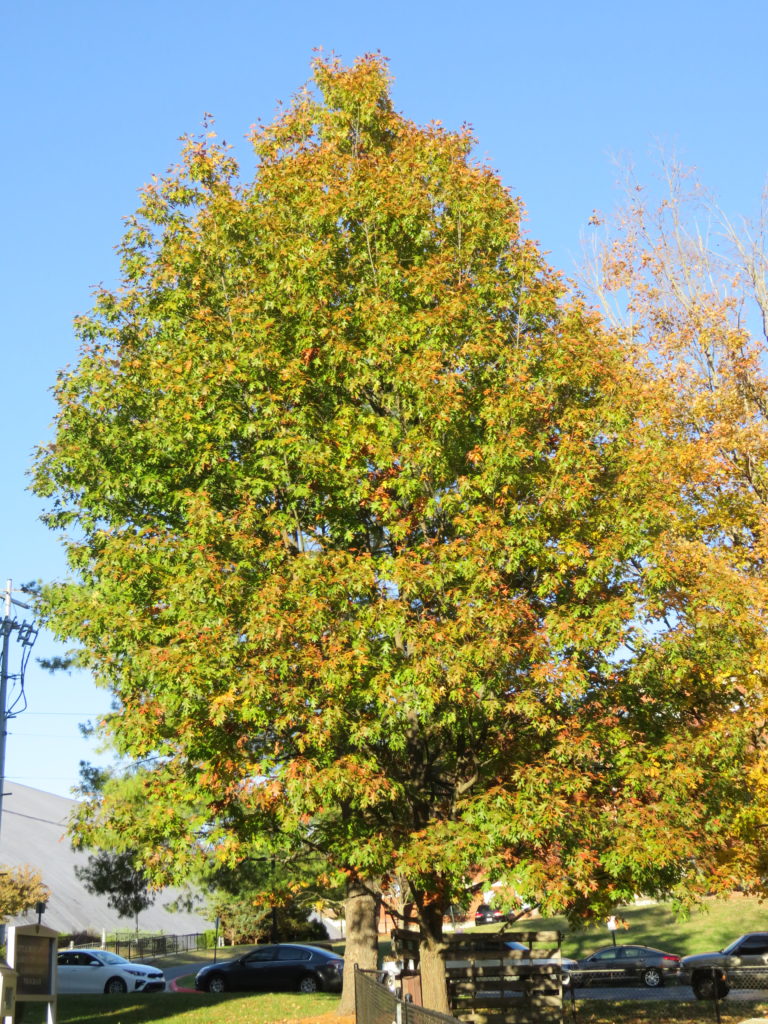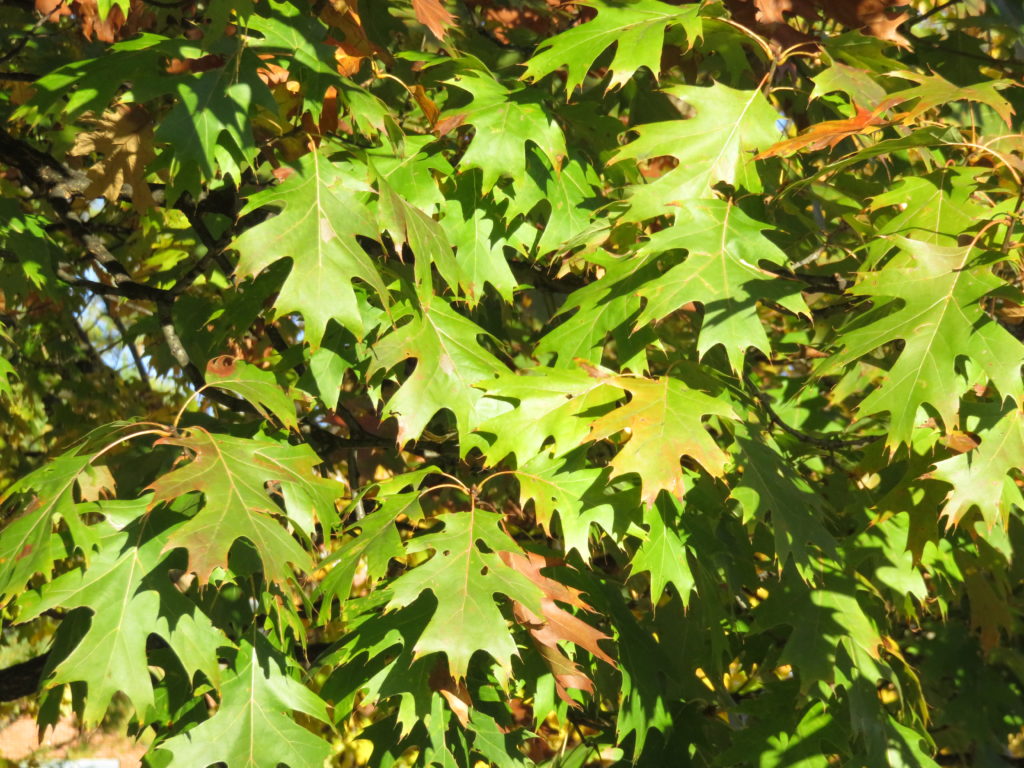
Shumard Oak (Quercus shumardii) is stately landscape tree in the red or black oak group (USDA hardiness zones 5-8). The species is native to moist bottomlands and slopes of the southeastern U.S.
Typically, Shumard grows at a moderately fast rate to a height of 40-60 feet (30-40 feet wide) in the landscape. It has a pyramidal or upright-branching with an open canopy and sturdy spreading branches. As the tree ages, it develops a broad open crown.
The 6-8 inch long seasonal leaves are glossy, dark green. Shumard oak leaves resemble those of scarlet oak (Q. coccinea), distinguished by 7-9 deeply cut lobes and are bristle-tipped. Leaves turn brownish red by late autumn.
This medium to large shade tree prefers a spacious sunny location. Insignificant flowers (separate male and female catkins) appear in early spring before the leaves start to emerge. Numerous 1-inch long acorns (take 2 years to mature) provide food for all kinds of wildlife including numerous birds, including woodpeckers, as well as wild turkeys, and squirrels, deer, et al.
Shumard oaks are utilized as shade trees in lawns and street trees. It grows well in wide variety of soils. It is widely adapted to drier limestone soils and high pH levels. However, chlorosis (yellowing of the foliage) sometimes occur in calcareous soils (low in acidicity). Most oaks, including Shumard, demonstrate good drought tolerance within a year or two after planting.

Shumard oaks are durable long-lived trees, but are potentially troubled by a large number of potential diseases and insect pests, including anthracnose, canker, leaf spot, rust, blight, galls, caterpillars, borers, leaf miners, oak lace bug and oak mite.
As a rule, shumard oaks are generally long-lived when properly planted and cared for. Large nursery grown trees may be difficult to transplant and are best moved in late winter or very early spring.

 Posted in
Posted in 
